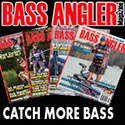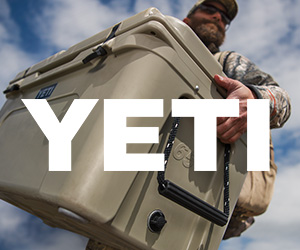|




|
|
Event: High
Country Trout Fishing |
High Altitude Trout Fishing in California High Country

|
Date: |
9/2/02 |
|
Location |
Yosemite
High Country |
|
Cost |
20 Dollars |
|
Reviewer: |
Zander |
Introduction: TackleTour goes on a 3 day field test into Yosemite High
Country for some amazing trout fishing. JIP and I set aside 3 days for a field
test in the High Country that would take our breath away in terms of
extraordinary fishing. What started out as a field test of some of the newest
rods and reels quickly turned into an expedition to land some extremely exotic
high altitude dwelling trout.
|
 |
|
Zander
casts to the center of a hidden pool alongside Conness Creek |
The goal: We often find ourselves traveling hundreds and thousands of
miles to experience different types of fishing, and sometimes forget that we
have great fishing in our own backyard. This is the case with the Yosemite High
Country which is less then 5 hours away from TackleTour headquarters in the Bay
Area. The goal of this trip was initially to field test light and ultra light
tackle, and some of the newest lure patterns from Panther Martin and Acme
Tackle. To make the tests more exciting JIP and I planned to target high
altitude waters, home to many different types of specialized trout. We packed
all our gear into large backpacks and set out for a 3 day field test.
|
 |
|
A fly
fisherman targets wild rainbows at the base of the falls |
Roughing it: Picking fishing waters in the Yosemite High Country isn't
difficult being as there are so many fantastic hot spots on and off trail. JIP
and I decided to really push hard and break away from easily accessible fishing
spots and stray from main rivers or trails in search of untouched waters. This
meant carrying additional gear like bear cans to preserve our food, a heavy duty
water filter to pump clean water from streams, and a trusty GPS to get us back
to civilization.
|
 |
|
Being in the
High Country for an extended period required us to filter drinking water
directly from the river |
These items in addition to the essentials like
warm clothing, food, and fishing tackle quickly added up to quite a load to
carry. With elevation changes of over 1000 feet from each targeted spot it was
quite a workout between each fishing break.
|
 |
|
Sometimes
reaching untouched water requires a little extra effort, here JIP uses two
hiking poles for leverage as he scales a granite dome |
Getting out there:
We decided to hit offshoot waters and back pools off Conness Creek. Conness
Creek is aptly named after Senator John Conness who first proposed to set aside
Yosemite land. This was the first time in
history that a federal government had set aside scenic lands simply to protect
them and to allow for their enjoyment by all people. Getting to Conness from
Tuolumne was easy but backpacking out to high altitude backwater took some real
willpower. After setting up camp 7 miles into the High Country, JIP and I could
put on more portable hip and daypacks and carry our rods with more mobility in
search for wild trout. We found ourselves constantly climbing over large granite
rocks to get to back-pools, and navigating dense brush to reach creek arms
hidden from trail view. Though we did get scraped up quite a bit (and stung in
the leg by a mean looking bug in my case) it was well worth the effort.
|
 |
|
No
backcountry tackle-box would be complete without an assortment of
Kastmasters |
The Tackle: Packing the right tackle on a trip to the high country can be
tricky. Conditions in the High Country vary greatly from the areas we usually
fish. Typically the two most popular types of tackle that are used by anglers
are fly rods and ultra light spinning setups. Because both JIP and I were field
testing new reels we opted for spinning rigs and an assortment of brightly
colored lures. One might think that fish that haven't seen lures before would
just hit anything that flashes. What we found was certain lures definitely had a
much higher hit ratio. Two of the hottest lures we tested that not only enticed
the most trout to follow, but also garnered the most hits were the standard gold
Kastmaster 1/12oz, and Panther Martin Yellow with red spotted spinner 1/16oz.
The Kastmaster was great for larger deeper pools, while the Panther Martin was
definitely king of shallow creek beds. (Stay tuned for in depth reviews of more
tackle and gear we tested coming this week!)
|
 |
|
Jackpot! We
found this isolated pool completely cutoff from the main river,
and it was filled with trout activity |
Target
Areas: We did our very best
to target waters that were hard to reach in our search for different types of
trout. We found the most success in arms that shot off from the main creek. The
deeper the pools the larger the fish. In addition we were lucky enough in two
cases to find deep pools completely cut off from the main creek that were
teaming with trapped hungry trout. One thing to remember when fishing in
situations like these is to use light line with your ultra light gear. The
waters in the high country are ultra clear so trout can see you and your line
just as well as you can see them hovering below. Thick line not only reduces
your casting distance of tiny lures but is often enough to spook fish. We
recommend 2lb test in most cases (just make sure to set that drag loose), and a
maximum of 4lb if you are weary of losing lures to larger fish.
|
 |
|
Caught with
a Kastmaster this medium sized Trout fights all the way in |
The Fish:
During the course of the trip JIP and I saw more trout variety then either of us
had ever experienced before. Every single fish we caught was released safely
back into the streams and ponds they were taken from. While out in the High
Country we were extremely happy to see the majority of all anglers practice
catch and release on these amazingly beautiful game fish. The following is just
a sample of some of the fish that can be caught in the California High Country:
|
 |
|
A wild
rainbow is pulled from beneath a cascade |
Rainbows: (Salmo Gairdneri) Rainbows were the most recognizable trout
pulled from the high country but were not the most populous, taking a backseat
to the Brooks. Native rainbows are among the most popular fish targeted in the
high country. With a temperature tolerance from below 32 degrees F to over 80
degrees F these fish can be found at the lower elevation steams and rivers. At
high elevations Rainbows can become extremely active at this time of year
because they can spawn as late as August! Most of the Rainbows we caught were in
fast running pools where they seemed to hold right below cascades or within
pools below small waterfalls.
|
 |
|
A
healthy looking Brown Trout is caught near submerged trees |
Brown
Trout: (Salmo Trutta) We found healthy numbers of medium to large
browns during our expedition. This European native was originally introduced in
North America beginning in 1883. Due to their feeding habits on mayflies,
caddisflies, and other insects, Browns are popular among fly-fisherman in the
High Country. Browns are easily identified with their darker color and red and
orange spots evident along their lateral surface. In stream born Browns their
bellies are creamy white rather then the yellow. Browns fight quite violently
and seem very powerful for their size. Most of the Browns we caught were in
deeper and darker pools with nearby rock cover .
|
 |
|
A beautiful
native Brook Trout showcases brilliant colors |
Brook Trout: (Salvelinus Fontinalis) The Brook Trout in the High
Country are among the most beautiful trout I have ever seen. Brooks are easily
distinguished by their red spots with blue aureoles on their sides, wavy pattern
on their back, and pink or reddish lower fins edged with a striking white
leading edge. Before the Brown Trout was introduced into California the Brook
Trout was the primary fly-fishing quarry in the High Country. This U.S. native
spawns late in the year from September to December. Brook trout demand very
specific water conditions and prefer very cold spring fed water. We found many
of these fish in just a few inches of water! While most of the Brooks we caught
were in the 7-10 inch range it is possible to catch larger fish. Because the
lethal limit of Brook Trout is a mere 77 degrees F they are only abundant in
high elevations, and their cold water habitat cannot exceed 68 degrees for any
extended period.
|
 |
|
A young
Golden Rainbow Trout Hybrid is caught in just inches of water |
Goldens:
(Salmo Agubonita) Many consider the Golden Trout to be the most beautiful
trout in the world. It is without a doubt one of the rarest in it's pure form.
Extremely brilliant in color this fish was originally found only in the Kern
River here in California. It has been introduced to Wyoming, Idaho, and
Washington with success. Goldens are different from other Trout being that they
prefer small insects like caddisflies and midges. It is rare to catch Goldens in
the High Country, but not impossible. Interestingly Rainbow Trout will readily
hybridize with Golden Trout. These hybrids share markings of both fish including
the distinct rainbow band and roughly 10 parr marks. Even catching these hybrid
golden/rainbows can be difficult. During our entire trip we only managed to
catch two.
|
 |
|
Preparing to
release this Brown back to the ice cold water |
Conclusion: What began as a routine field test quickly turned into a
fanatical search for exotic trout species for both JIP and I. Perhaps it was the
over abundance of clean air, or the breathtaking scenery...but JIP and I
couldn't imagine anything better then trekking through High Country wilderness
and finding untouched trout pools. The beauty of the Yosemite High Country is
only matched by the incredible splendor of the many species of trout that we
were lucky enough to land. Just being out in the High Country for three days
makes it easy to remember why fishing is a good deal more then just a
hobby....its a passion.
Stay tuned for in-depth
reviews featuring all the tackle that landed these High Country Trout!

|
|





|
|




























